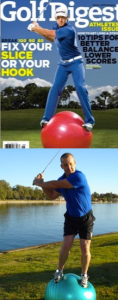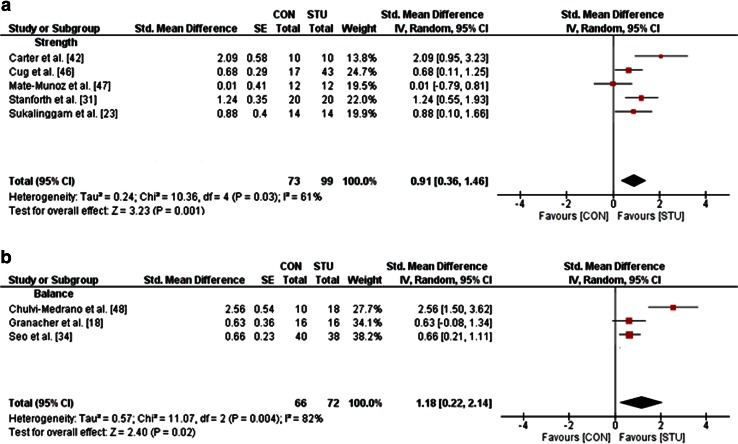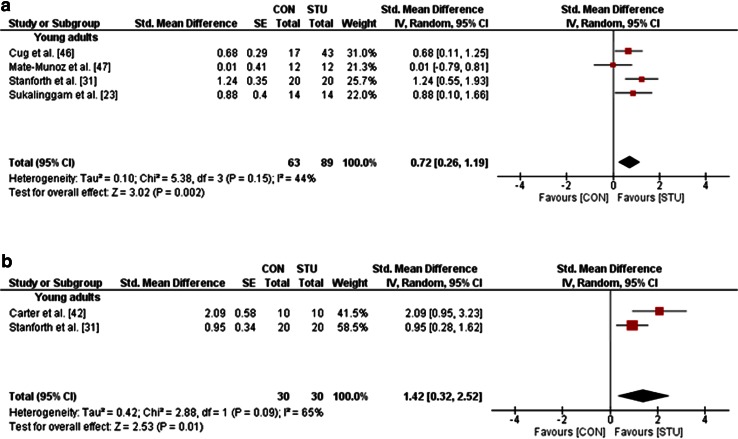Unstable Surface Training across different age groups (*Meta-Analysis)
 Unstable surface training has been around for over a decade, but it’s only over those past ten years that it’s been seriously studied as a training modality (*and photoshopped into hilarious memes). And most recently, it’s been studied examined in a meta-analysis (a study that studies prior studies) across different ages. This is interesting, because although we never invested a ton of thought into the implications, it might be that one age group might benefit from this kind of training, while others might see far less benefit (or a reduction in training adaptations, as seen in the Cressey et al. study on soccer players, from 2006).
Unstable surface training has been around for over a decade, but it’s only over those past ten years that it’s been seriously studied as a training modality (*and photoshopped into hilarious memes). And most recently, it’s been studied examined in a meta-analysis (a study that studies prior studies) across different ages. This is interesting, because although we never invested a ton of thought into the implications, it might be that one age group might benefit from this kind of training, while others might see far less benefit (or a reduction in training adaptations, as seen in the Cressey et al. study on soccer players, from 2006).
To quantify effects of unstable surface training across different age groups, 209 articles were initially examined. That number was whittled down to 22 when they limited the criteria to studies examining healthy individuals, and recorded at least one athletically-relevant variable such as maximal strength, strength endurance, muscle power, or static/dynamic balance.
Unfortunately, no studies were identified that examined examined stable versus unstable training or a control group in children and middle-aged adults. Here’s what they found across other age groups, in terms of the size of effect versus control groups (in other words, the actual results):
- Unstable surface training produced medium effects on maximal strength in young adults
- Unstable surface training produced no effects to medium effects in old adults
- Large effects were detected on strength endurance in adolescents
- Large effects were detected on strength endurance in young adults
- In old adults, a small effect was found on strength endurance
- For muscular power, medium effects were observed in young adults and small effects were observed in old adults.
- For muscular power, medium effects were observed in were observed in old adults
- Large effects were found for static and dynamic balance in old adults
- A small effect was found for dynamic balance in young adults
The comparison of stable (i.e. traditional weight training) versus unstable training revealed highly inconsistent results:
- Small to medium effects were found for maximal strength in adolescents in favour of standard strength training (i.e. not on an unstable surface)
- With regard to strength endurance, large effects were found in adolescents in favour of stable surface training over the unstable variety
- For both maximal strength and strength endurance, small effects were seen with unstable surface training (i.e. it seems to have application, just not more than standard weight training)
- In terms of muscle power, medium effects were found in favour of standard strength training for young adults
- With regard to balance, small effects were detected in adolescents for static and dynamic balance in favour of unstable training over traditional weight training (kind of seems predictable).
- In young adults, small effects were found for static balance in favour of standard training (maybe less predictable), but with regards to dynamic balance, the analysis revealed small effects in young adults that favored unstable surface training
The scientists performing this metastudy concluded that unstable surface training is superior to control groups, but not when compared to traditional (stable) weight training. Their key points were:
| Our analyses revealed that STU, as compared with CON, is an effective means to improve measures of muscle strength in healthy adolescents, young adults and old adults, and to improve variables of power and balance in young and old adults. |
| In adolescents and young adults, the specific comparison of STU with STS resulted in contradictory findings, and thus the use of unstable as compared with stable surfaces during strength training is not recommended in healthy adolescents and young adults if the goal is to enhance performance on stable surfaces.
*Sports Med. 2015 Dec;45(12):1645-69. doi: 10.1007/s40279-015-0384-x. |




